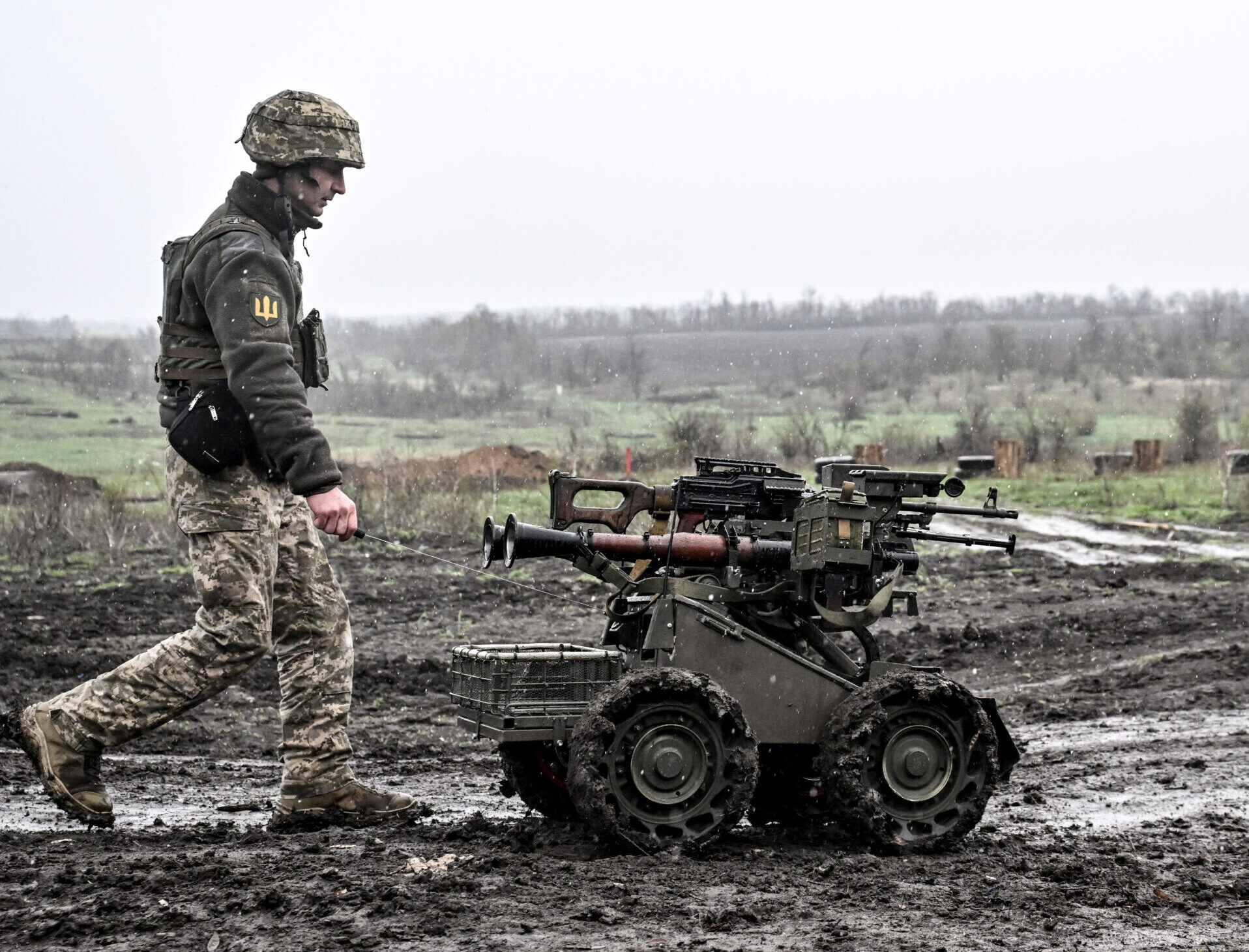When Russian President Vladimir Putin announced the full-scale invasion of Ukraine in February 2022, he cited Ukraine’s “demilitarization” as one of his two key war aims. He has not yet succeeded in achieving this goal, to put it mildly. Rather than disarming Ukraine, Putin’s invasion has actually transformed the country into one of Europe’s most formidable military powers.
The emergence of the Ukrainian army as a serious international fighting force can be traced back to the beginning of Russia’s invasion in 2014. At the time, decades of neglect and corruption had left Ukraine virtually defenseless. With the country’s existence under threat, a program of military modernization was rapidly adopted. During the following years, the Ukrainian Armed Forces expanded dramatically and implemented a series of far-reaching reforms in line with NATO standards.
Following the full-scale Russian invasion of February 2022, the transformation of the Ukrainian military entered a new phase. The number of men and women in uniform swelled to around one million, making the Ukrainian army by far the largest in Europe. They have been backed by a domestic defense industry that has grown by orders of magnitude over the past three years and now accounts for around 40 percent of Ukraine’s military needs.
For today’s Ukraine, a strong domestic defense sector is now a matter of national survival. During the initial stages of Russia’s full-scale invasion, the Ukrainian authorities relied heavily on military aid from the country’s partners. This support helped enable Ukraine’s early victories but was also often subject to prolonged delays that left Kyiv vulnerable to changing political priorities in various Western capitals.
The need for greater military self-sufficiency has been underlined in recent months by the return of US President Donald Trump to the White House. The new US leader has made clear that he does not intend to maintain United States military support for Ukraine, and plans instead to downgrade the overall American commitment to European security. This shift in US policy has confirmed the wisdom of Ukraine’s earlier decision to prioritize the expansion of the country’s domestic defense industry.
Ukraine’s growing military capabilities owe much to a defense tech revolution that has been underway in the country since 2022. Following Russia’s full-scale invasion, hundreds of Ukrainian companies have begun producing innovative new technologies for the military ranging from software to combat drones. By focusing on relatively simple and affordable defense tech solutions, Ukraine has been able to close the gap on Russia despite Moscow’s often overwhelming advantages in terms of manpower, firepower, and resources.
Eurasia Center events

More than three years since the start of Russia’s full-scale invasion, it is now clear that wartime necessity has transformed Ukraine into perhaps the most agile and experimental military ecosystem in the world. Whereas Western arms procurement cycles typically span several years, Ukraine can translate ideas into operational weapons within the space of just a few months. This has helped establish Ukraine as a global leader in drone warfare. The country’s use of inexpensive FPV drones is increasingly defining the modern battlefield and now accounts for approximately 80 percent of all Russian casualties.
Ukraine’s domestic drone production capacity is growing at a remarkable rate. According to the country’s Deputy Defense Minister Ivan Havryliuk, Ukrainian forces are currently receiving approximately 200,000 drones per month, a tenfold increase on the figure from just one year ago. Kyiv is also making rapid progress in the development of numerous other cutting edge military technologies including robotic systems, marine drones, and cruise missiles.
Ukraine’s dramatically expanded armed forces and groundbreaking defense tech sector make the country an indispensable partner for Europe. After decades of reliance on US security support, European leaders currently find themselves confronted with the new political realities of an isolationist United States and an expansionist Russia. In this uncertain environment, it makes good sense for Europe to upgrade its support for the Ukrainian army while deepening collaboration with Ukrainian defense tech companies.
European investment in the Ukrainian defense industry is already on the rise, both in terms of government donor funds and private sector investment. This trend looks set to intensify in the coming months as Ukrainians and their European partners increasingly acknowledge that their collective future security depends on closer cooperation. Russia’s invasion has forced Ukraine to become a major military power and a leading defense tech innovator. This status looks set to guarantee the country a position at the heart of Europe’s security architecture for many years to come.
David Kirichenko is an associate research fellow at the Henry Jackson Society.
The views expressed in UkraineAlert are solely those of the authors and do not necessarily reflect the views of the , its staff, or its supporters.

The Eurasia Center’s mission is to enhance transatlantic cooperation in promoting stability, democratic values and prosperity in Eurasia, from Eastern Europe and Turkey in the West to the Caucasus, Russia and Central Asia in the East.
Image: A soldier from the 65th Mechanized Brigade of the Ukrainian Ground Forces defends the Zaporizhzhia direction and follows a Gnom-2 ground-based combat drone during field tests in Ukraine on April 9, 2025. (Photo by Dmytro Smolienko/Ukrinform/NurPhoto)









